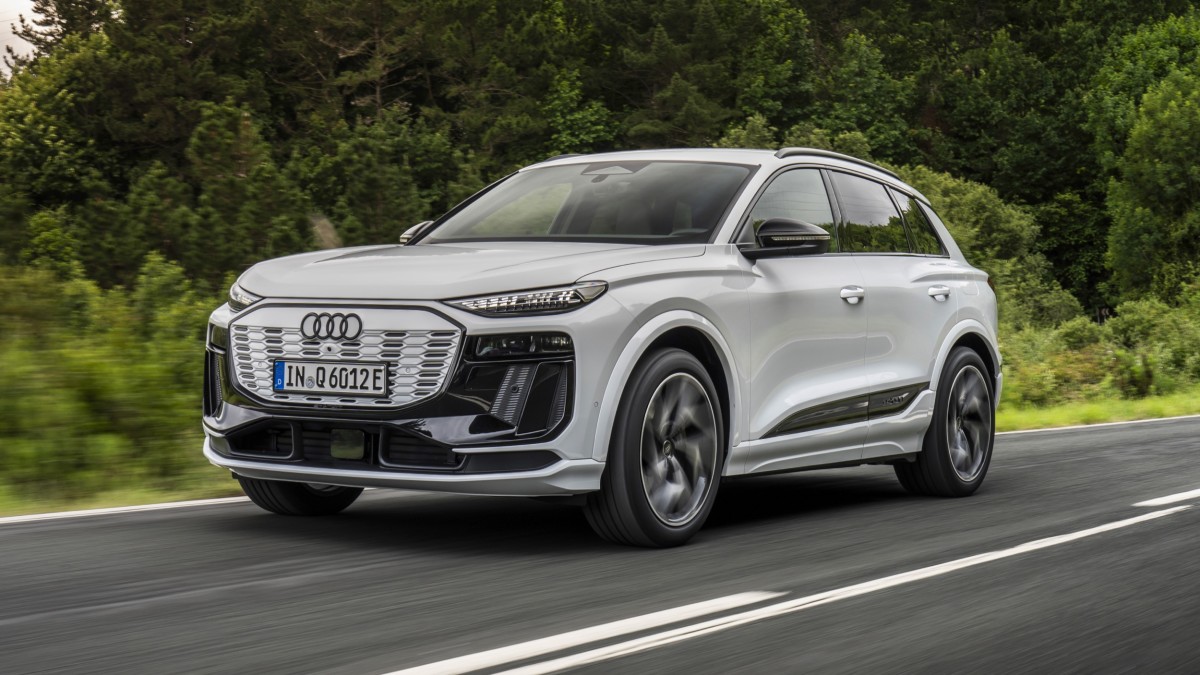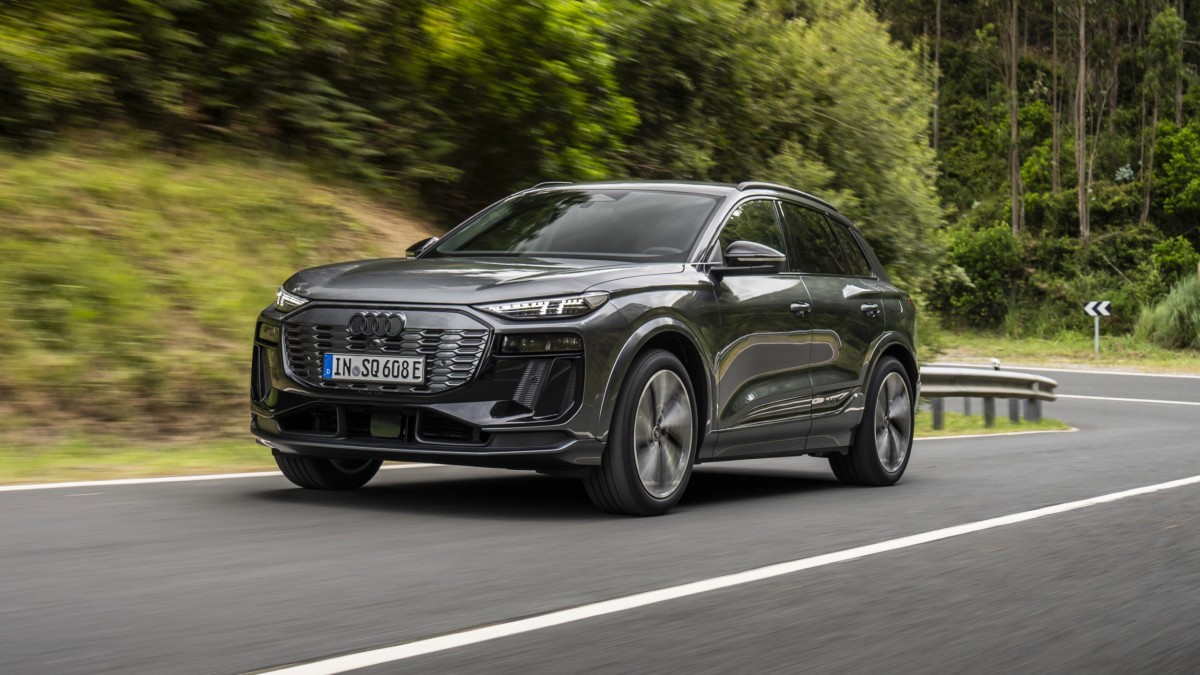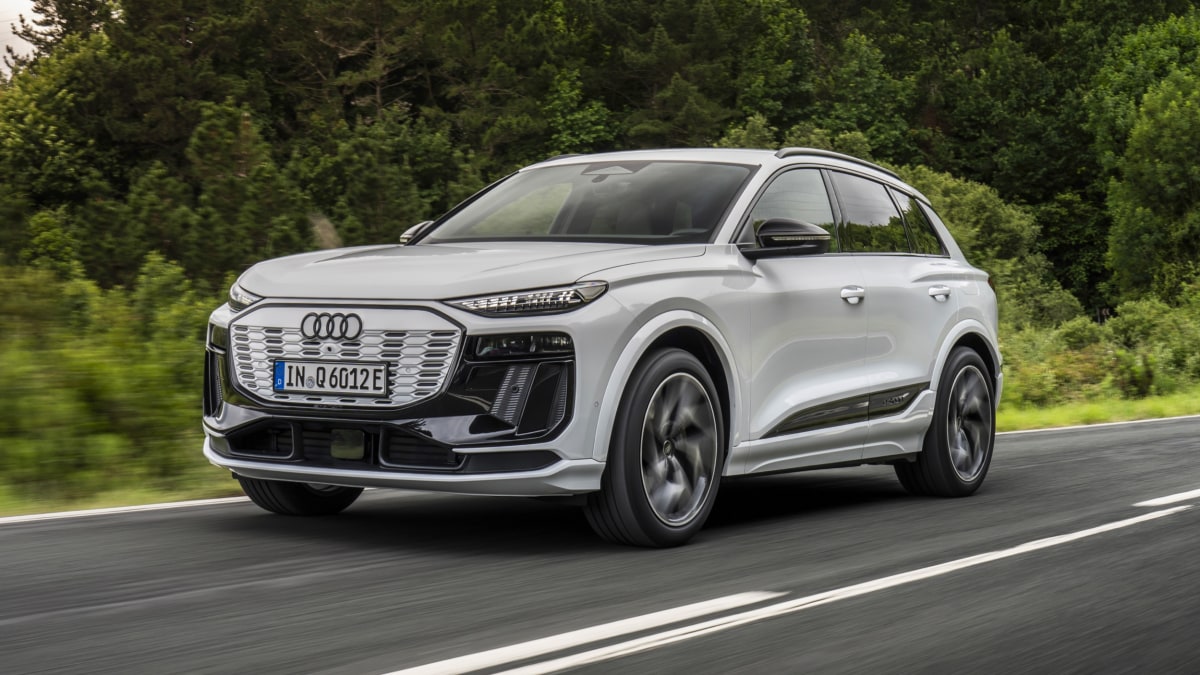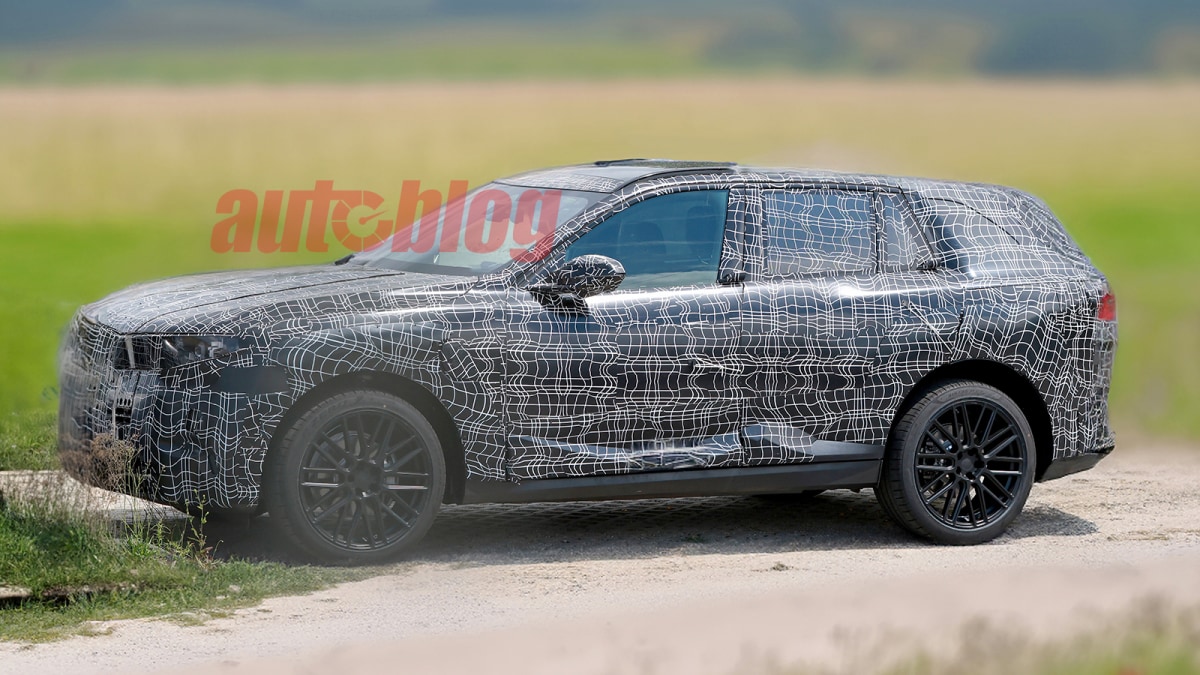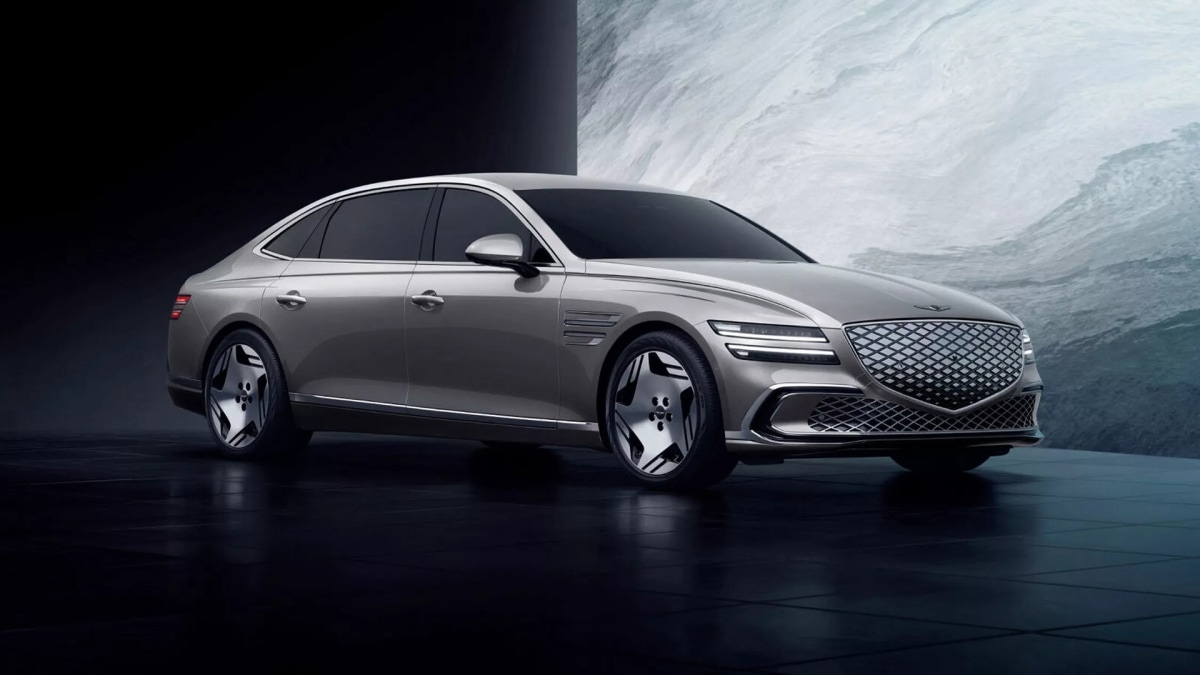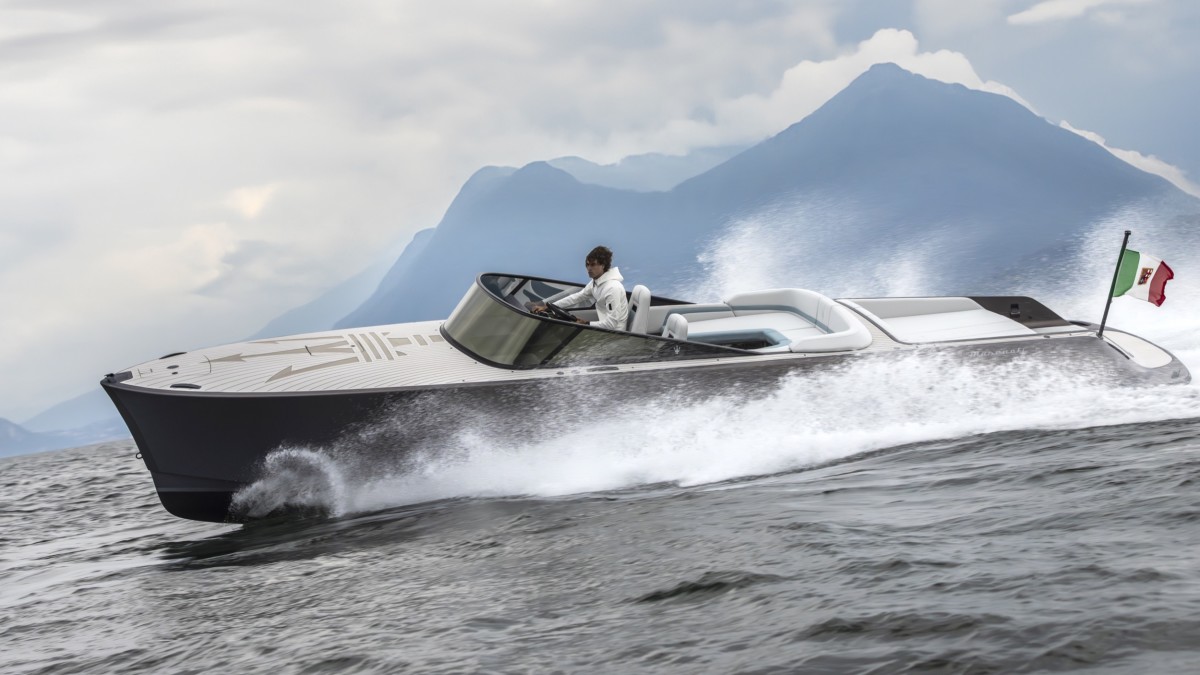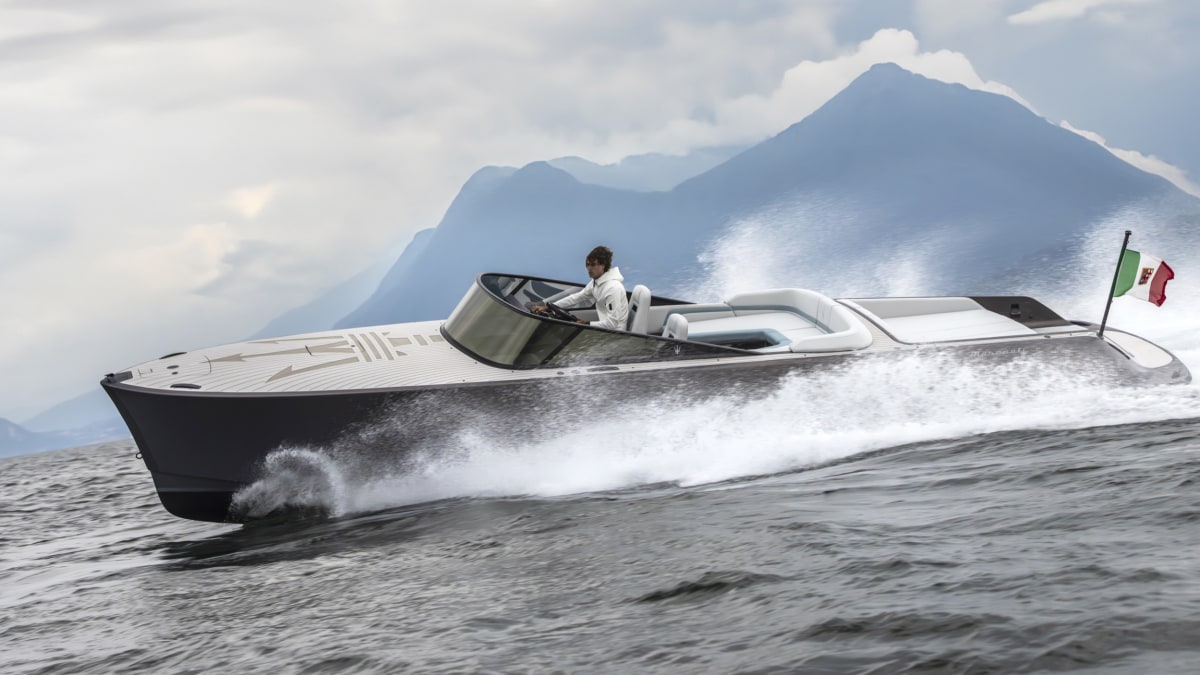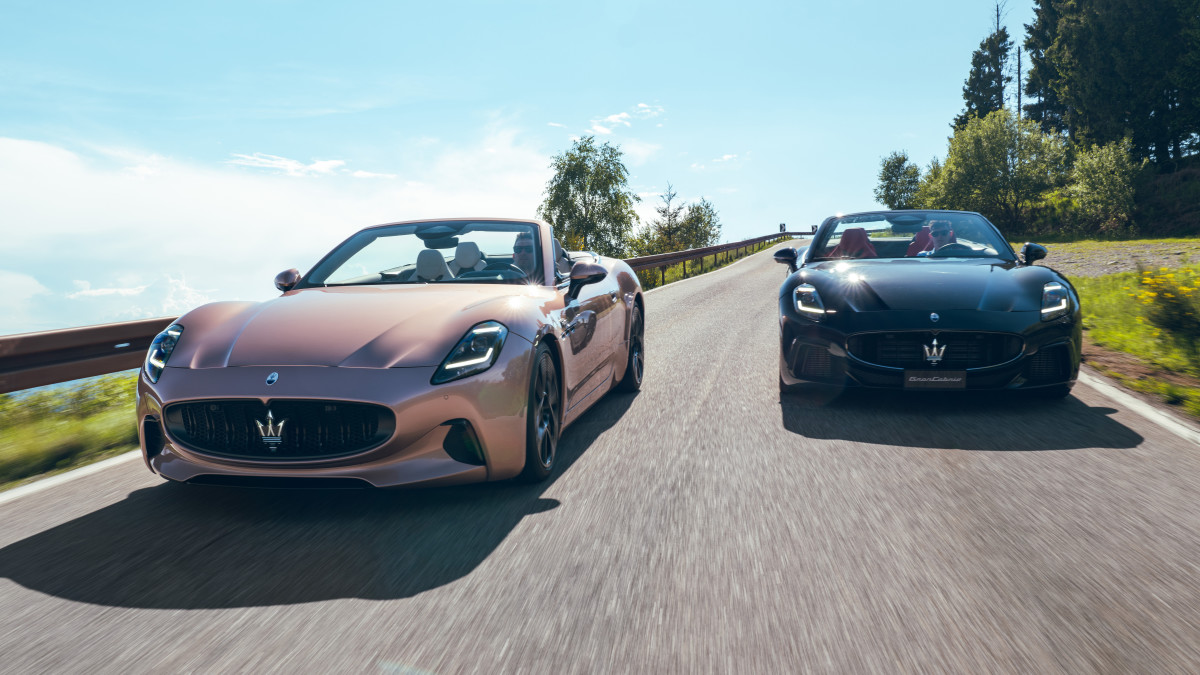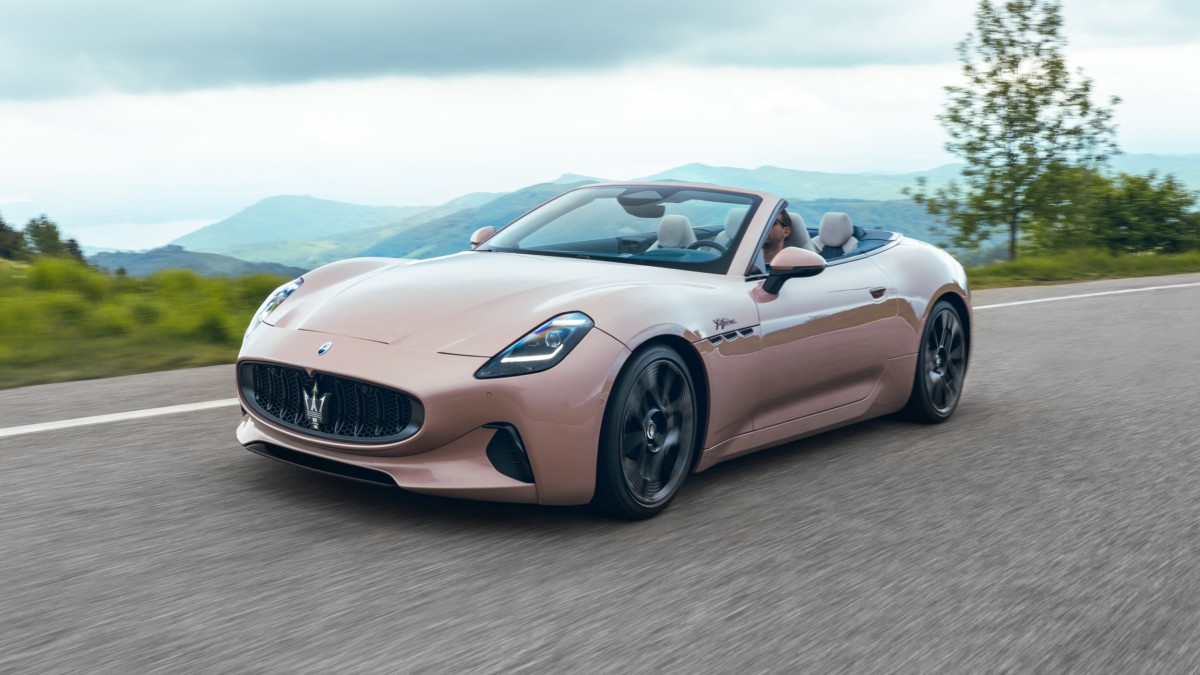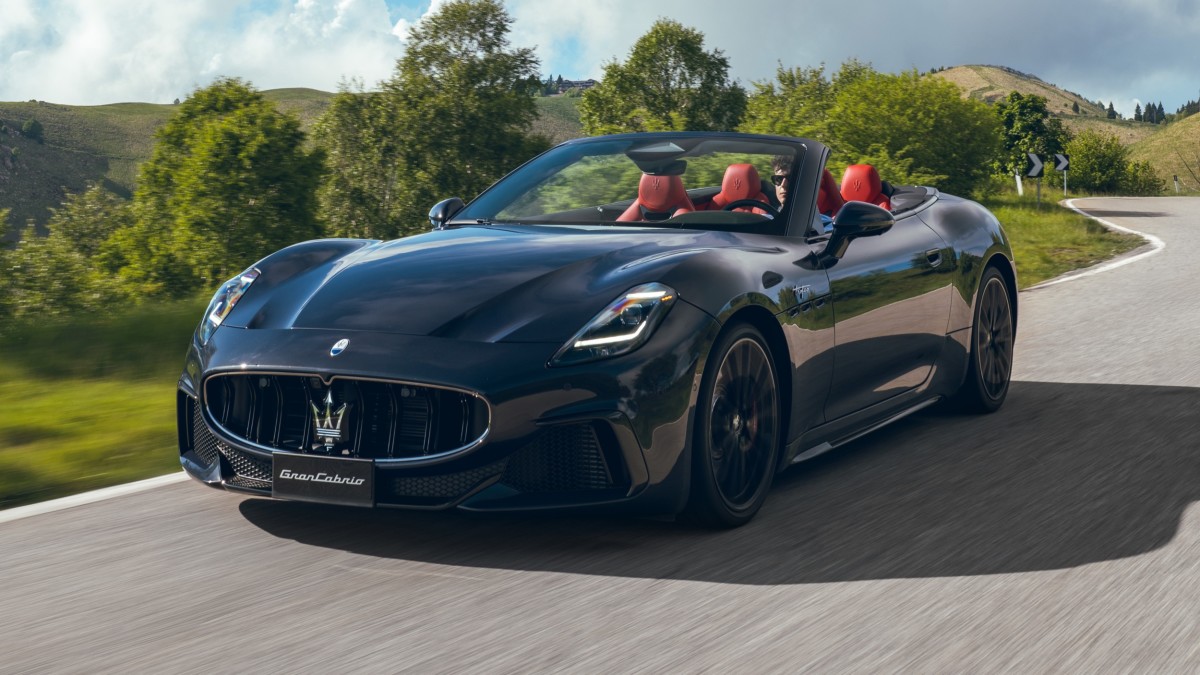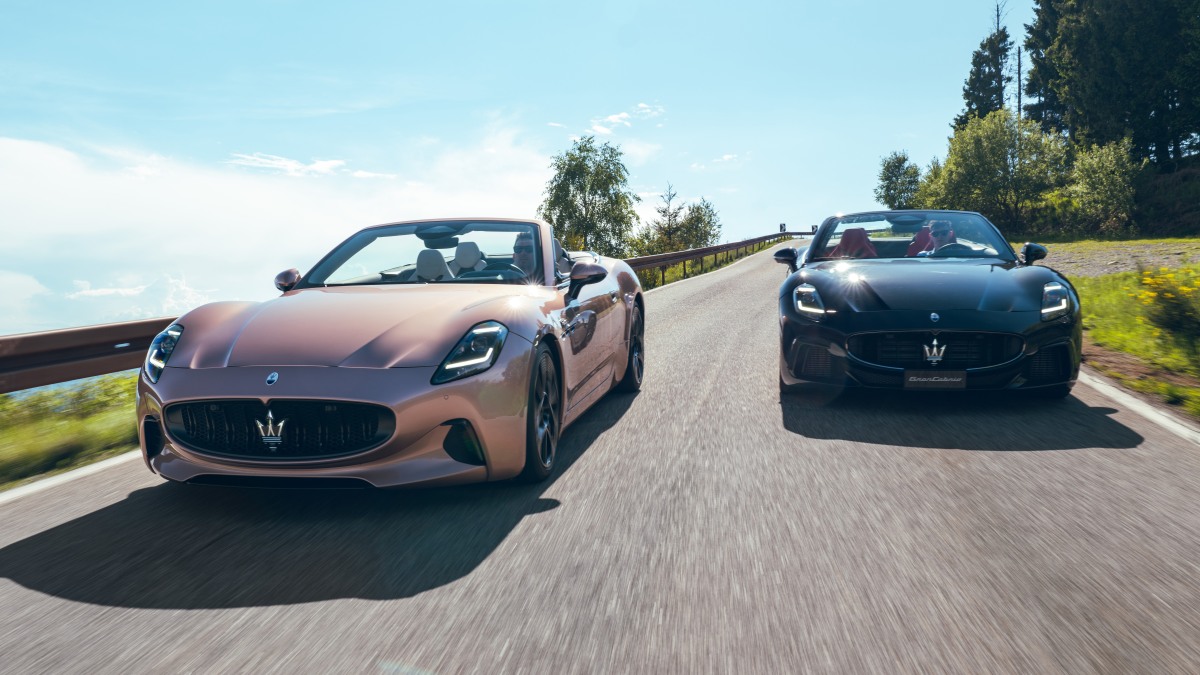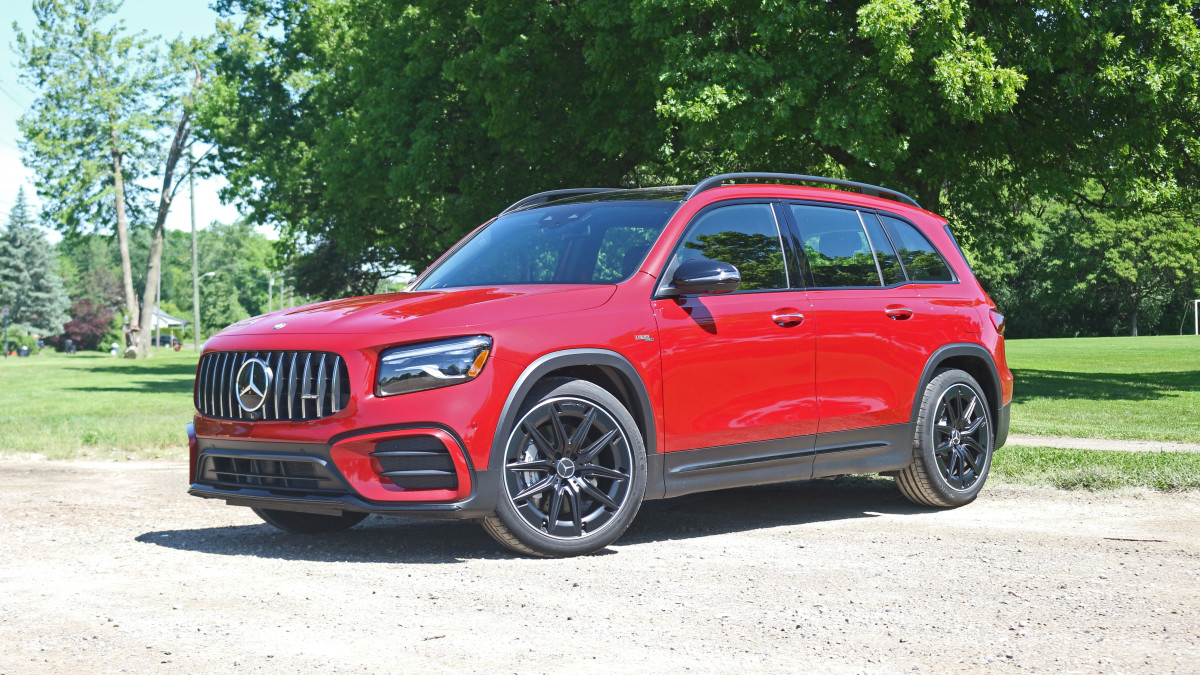
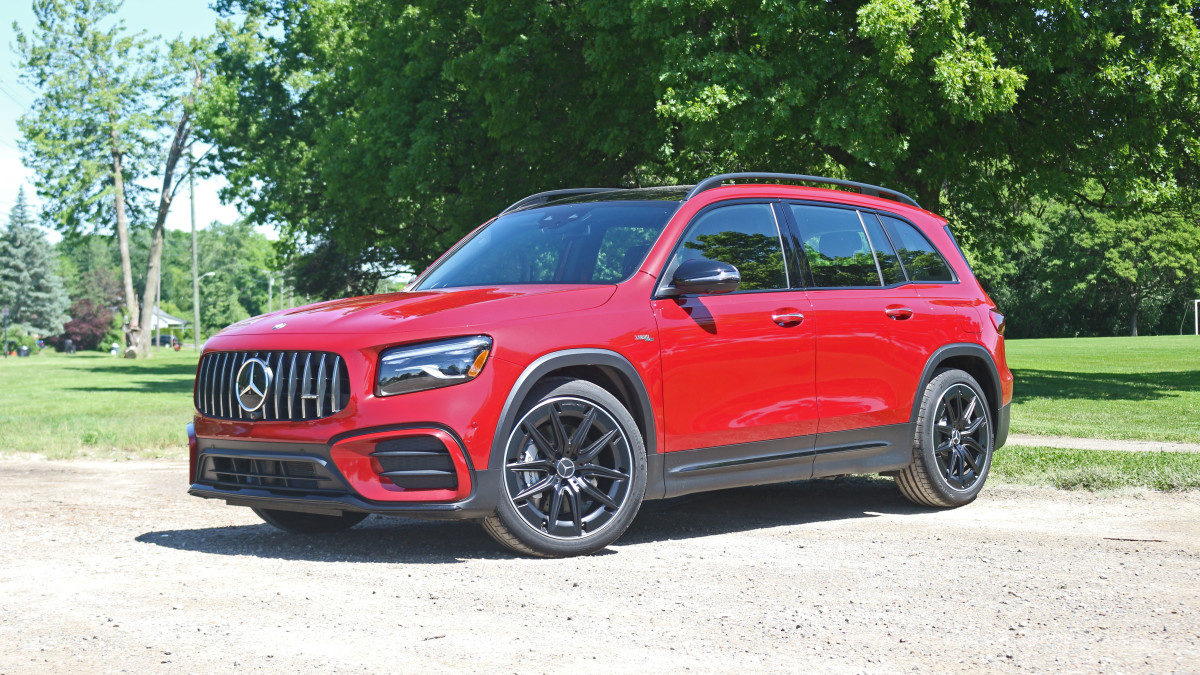
Pros: Huge space and great mpg for its segment; high-style interior; abundant tech options; spunky AMG 35
Cons: Unrefined transmission and throttle response; infotainment system is flashy but can overwhelm
In a world where small SUVs can easily fall into impractical penalty box territory, the Mercedes-Benz GLB-Class is a breath of fresh air. Unlike many of its peers, it’s big enough, versatile enough and premium enough to warrant the elevated price it commands and make it a genuine luxury offering, even if it is among the cheaper options Mercedes offers.
What’s the GLB’s secret? Well, as small SUVs go, it’s actually pretty big inside. Credit the practical, boxy shape and whip-smart packaging. They combine to deliver a usable, comfortable space with a family-friendly back seat and class-dominating cargo carrying capacity. The material quality and design of the interior are both above average for the segment, and there's no shortage of tech goodies from Mercedes' deep toy box available -- just know that infotainment can be a bit overwhelming to find what you're looking for. Another potential downside is the GLB 250's powertrain, particularly its dual-clutch automated manual transmission, which can be slow in responding to throttle inputs and generally feels less refined than what you'll find in rivals (most notably the BMW X1). In other dynamics regards, it's quite competent, while the AMG-prepped GLB35 goes much further than mere competence by basically being a hot hatch with better visibility. It runs circles around the likes of the X1, Audi Q3, Lexus UX and even the Mercedes-Benz GLA as a practical daily driver. Ultimately, we recommend both GLB models.
Interior & Technology | Passenger & Cargo Space | Performance & Fuel Economy
What it's like to drive | Pricing & Trim Levels | Crash Ratings & Safety Features
What's new for 2024?
Mercedes put the GLB under the knife for a little nip-and-tuck for 2024. The fundamentals remain the same, but the engine gets a mild-hybrid boost and the styling and interior both received attention. The big inclusion in this round of updates is the latest version of Benz’s MBUX Infotainment system. Gone is the old 7-inch base display; the new standard, 10.25-inch setup packs improved performance and wireless Android Auto and Apple CarPlay compatibility. The old console-mounted touchpad controller is also gone, leaving behind a shallow, grippy storage pad of questionable value. Some behind-the-scenes updates improve the performance of the GLB’s active safety systems and, for the first time, a heated steering wheel can be optioned with AMG appearance packages.



What are the GLB interior and in-car technology like?
No matter where you look in the GLB, its clever packaging impresses. It offers lots of storage in both the passenger cabin and cargo area, making it more practical than most luxury offerings in this segment (and indeed many others). The GLB’s driving position is excellent, and its front- and second-row seats are comfortable and supportive with plenty of adjustment.
The GLB is on the inexpensive side for a Mercedes-Benz, but the quality of materials and available options are on par or better for expectations at this price point. The fancier options will drive up the price, of course, but even the fundamental components are high-quality and precise.
Every GLB includes the last iteration of Mercedes-Benz’s MBUX infotainment suite, which is controlled by a collection of redundant input choices: a new dual 10.25-inch display, steering wheel controls and natural-language commands. The old center console touchpad has been evicted for 2024, though, which is OK from a functionality stand point (we probably used it less than anything else) but the oddly shaped, grippy storage pad that is left in its wake is questionably useful (an iPhone 15 won't fit in it for example) and seems like a waste of space in what is otherwise a well laid out interior. Also, while we like the infotainment system's "have it your way approach" to inputs and appreciate this system's rapid responses and pretty graphics, it just isn't always simple to use. Standard Wireless Android Auto and Apple CarPlay are both great to have, and we appreciate that Mercedes makes it easy to quickly go between the MBUX and Apple/Android interfaces with permanently docked icons in the screen's upper left corner.


How big is the GLB?
The GLB's wheelbase is closer to that of many midsize offerings, and its overall length exceeds that of most competitors. You don't really notice this behind the wheel – it still feels pretty small – and this extra length combined with the boxy design results in the GLB being a cargo-hauling rockstar. On paper, Mercedes says the GLB offers 24 cubic feet with the second-row seats up, but in reality, there's actually far more than that number would imply. Its rear load floor can be lowered to accommodate larger items, but even with the floor in its standard position, the GLB can swallow more cargo than crossovers in the bigger, pricier compact segment.
This extra length translates into tons of second-row space, where passengers will find sliding and reclining seats for extra comfort (you don't get those in the mechanically related GLA). The combination of fold-down seatbacks and sliding bases can also be exploited for additional cargo space if the roomy hatch alone will not suffice, making the GLB a versatility rockstar, too.
The GLB also has available third-row seating, which its smaller competitors and even those in the larger compact class lack. We suppose this option doesn't hurt, but these optional rearmost seats just aren't that habitable, even for kids. We'd skip them or get a non-luxury three-row vehicle for the same price.

What are the GLB 250 and AMG 35 fuel economy and performance specs?
The GLB 250 name indicates that the GLB in question has the base engine: a 2.0-liter turbocharged inline-four producing 221 horsepower and 258 pound-feet of torque, with a 13-horsepower boost coming from its mild-hybrid assist system. It has an eight-speed dual-clutch automated manual transmission and standard front-wheel drive. In this configuration, the GLB 250 is rated at 25 mpg city, 33 mpg highway and 28 mpg combined. With the “4Matic” all-wheel-drive system, those numbers drop to 24 mpg city, 32 mpg highway and 27 mpg combined.
The Mercedes-AMG GLB 35 also has a 2.0-liter turbo, but it’s been worked over by Mercedes’ AMG tuning division to produce 302 hp and 295 lb-ft of torque. It’ll hit 60 in 5.4 seconds. The eight-speed DCT and standard all-wheel drive are also special AMG versions. It achieves 21 mpg city, 26 mpg highway and 23 mpg combined.
There is technically an electric GLB available, although it’s officially known as the Mercedes-Benz EQB. You can read our EQB first drive review here.
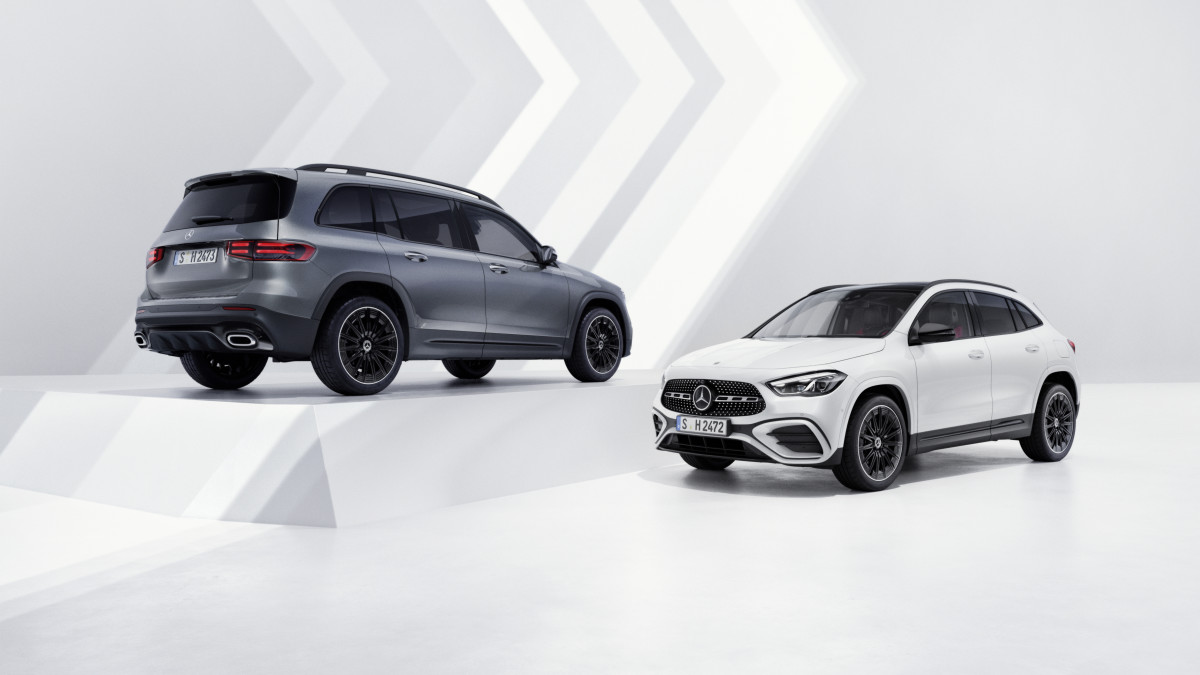
The new Mercedes-Benz GLA and The new Mercedes-Benz GLB; Mercedes-Benz GLA 250 e (preliminary figures: fuel consumption combined, weighted: 1.4-1.1 l/100 km; CO2 emissions combined, weighted: 31-24 g/km; electricity consumption combined, weighted: 23.8-21.1 kWh/100 km) Information on fuel consumption, CO2 emissions, electricity consumption and range is provisional and was determined internally in accordance with the "WLTP test procedure" certification method. Neither confirmed values from an officially recognised testing organisation nor an EC type approval nor a certificate of conformity with official values are available to date.. Deviations between the data and the official values are possible.
What's the GLB like to drive?
The GLB 250 is more about luxury and comfort than performance. Thanks to its long wheelbase and supple suspension, it delivers in spades for this segment. The optional adaptive suspension will tighten up the handling on demand, but even with that option that we're guessing will rarely show up on dealer lots, the GLB 250 never rises to the level of "fun to drive." That's perfectly OK, though – it doesn't need to be. As for what's under the hood, the GLB 250’s standard four-cylinder provides plenty of punch but does come off a little thrashy compared to what you'll experience in pricier Benz models. The dual-clutch automated manual transmission can also be slow to engage, resulting in delayed responses to throttle inputs and a general lack of powertrain refinement. Indeed, dynamic refinement in general is where the GLB shows its lower price tag when in comparison to pricier Benzes like the GLC. It's a reduction at least commensurate with its price tag, though (maybe not the transmission), and better than what you'll find in some rivals in the segment.
As for the AMG GLB 35, it is legitimately fun even if it doesn’t quite reach the level of “extra-tall hot hatch” as the smaller GLA 35 does. The larger footprint and extra tallness result in it being not nearly as agile or darty. Nevertheless, like the GLA and other AMG 35 models, the GLB 35 is just “on” from the second you pop it into Drive. The snappy and quick eight-speed dual-clutch automatic transmission cracks off upshifts with a pop that accentuates and underlines every shift. Indeed, the level of drama and added theater encourages a heavy right foot. And thanks to its AMG-tuned chassis, you can still happily hustle this little crossover around a winding road. With the Sport drive mode selected, body motions are nicely controlled with the stiffness and sharpness you’d expect from an AMG. Steering response is a bit numb, though, and its weighting isn’t as sharp as other AMG 35s.
What other Mercedes-Benz GLB reviews can I read?
Mercedes-Benz GLA, GLB get subtle design updates and more tech for 2024
AMG's 35-badged models go under the knife as well

Mercedes-AMG GLB 35 Road Test Review
Take a closer look at the 302-horsepower, AMG-tuned GLB that injects a spunky amount of fun into what is otherwise a surprisingly sensible small SUV.

2020 Mercedes-Benz GLB 250 First Drive | The real deal
Our initial drive of the GLB features more details about its design and engineering. It really hasn't changed much since then.

2020 Mercedes-Benz GLB 250 Luggage Test | It can hold all this!
Forget the official numbers. The boxy and versatile GLB punches above its weight class. All of this stuff fits in the cargo area.

2020 Mercedes-Benz GLB-Class Interior Storage Driveway Test
Senior Editor James Riswick breaks out odds and ends to stuff inside Mercedes' most utility-focused model. The GLB has actually added a storage area since this was done (where the old MBUX touchpad was), but it doesn't really add much.

What is the 2023 GLB-Class price?
The 2024 Mercedes-Benz GLB 250 starts at $45,600, including the $1,150 destination charge. That’s nearly $5,000 more than in 2023. The all-wheel-drive GLB 250 4Matic starts at $47,600. The AMG GLB 35 starts at $60,200, which is almost $8,000 more than it was in 2023.
The GLB offers far more customization than is typical at this price point. There are the usual packages, including the $1,500 Exclusive Trim package that adds navigation to the standard 10.25-inch display, but many features, including the optional third row of seating ($850) are stand-alone options unless you go for the all-in Pinnacle Trim ($5,150). This means it can be difficult to find exactly what you want in stock at a dealer lot, but it also means that if you have some patience, you can order exactly what you want and not pay for stuff you don’t.
Another key option to consider is the AMG Night Package that adds unique styling elements (such as the black AMG wheels below) to the GLB.

What are the GLB safety ratings and driver assistance features?
The GLB 250’s standard driver assistance equipment includes forward collision warning with automatic emergency braking and pedestrian detection, blind-spot and rear cross-traffic warning, and a driver inattention monitor. The Driver Assistance package adds a mountain of systems, most of which are better executed than many comparable systems. These include lane-keeping assist, automated evasive steering assist for the blind-spot and forward collision warning systems, automatic emergency braking for the rear cross-traffic warning system, a higher speed threshold for the forward automatic emergency braking system, automated speed reduction based on posted speed limits (you can turn this one off like most of these systems), Mercedes’ Pre-Safe pre-crash preparation systems, and Mercedes excellent Distronic adaptive cruise control system with stop-and-go capability and lane-centering steering assist.
Should all of that still fail to prevent a crash, the NHTSA gave the GLB four out of five stars for overall frontal crash protection, and five stars for overall side crash protection. The Insurance Institute for Highway Safety hasn’t tested it.

